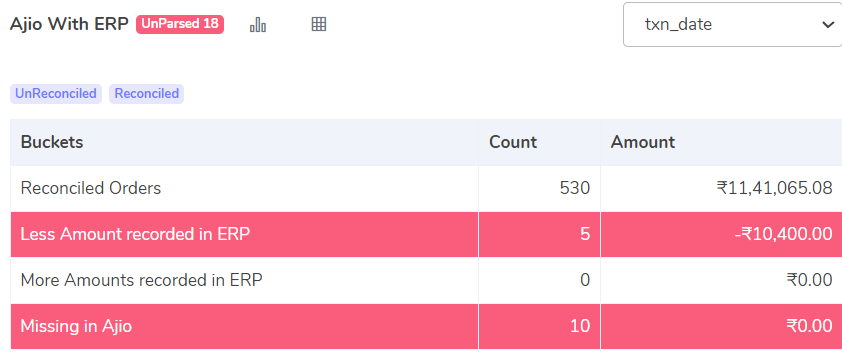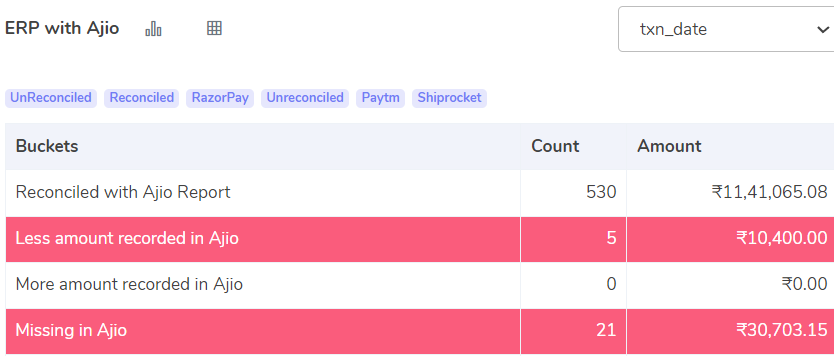The current trends may be found in Ajio, where they have been carefully chosen and priced reasonably. They are developing a unique e-commerce strategy for India through Ajio, utilizing the cutting-edge internet infrastructure that Ajio has established and the reliable physical retail operation that Reliance Retail has constructed. This paradigm would include developments in the fields of delivery services, the financial ecosystem, and better customer experiences, as well as the seamless integration of online and offline business models. It’s a great opportunity for a vendor to sell on Ajio’s marketplace. This will lead to an exponential increase for a seller.
A vendor will sell their items on a very large scale because Ajio is so well-liked by customers, which is undoubtedly advantageous to the vendor. On the other hand, maintaining records and ensuring that every transaction is carried out accurately can be difficult responsibilities. With the use of this automatic reconciliation system, a seller is able to accurately and promptly record and assess transactions. A seller can easily spot issues, fix them, or submit a claim to Ajio to lower payments or amend mistakes. Even if sellers are unaware of it, it may cause them to lose money. Only accurate reconciliation can fix this issue, and the Cointab system does just that.
A seller can record and evaluate transactions accurately and swiftly by using this automatic reconciliation system. By discovering problems as quickly as feasible, resolving them, or submitting a claim to Ajio, a seller can reduce payments or correct inaccuracies.
Reports needed for reconciliation
- Ajio Order Report
- Ajio GST Report
- Ajio Return Report
- Ajio Payout Report
- Reports from the client’s ERP (e.g., SAP, Tally, etc.).
The reconciliation procedure is started by using a common identity to connect the aforementioned reports to the client ERP reports. The system then double-checks every order component, such as the item’s value, any fees that apply to the payment that was made, and any fees imposed.
The results are then presented in a simple, easy-to-understand format and are all available on a single dashboard.
The result is as follows:
Ajio – ERP Reconciliation
Each piece of information kept in the client’s ERP system is verified by the system, which also compares it to the Ajio Invoice report. The following distinctions and highlights are made for the orders:
- Reconciled Orders
- The transactions where the order amounts are equal.
- Less Amount recorded in ERP
- In the ERP, the order amounts for these transactions are less than what is shown in the Ajio Sales report.
- More Amounts recorded in ERP
- Order transactions in which the amount in the ERP exceeds the amount in the Ajio Sales report.
- Missing in Ajio
- Despite being recorded in the ERP system, the orders are not included in the Ajio reports.
ERP – Ajio Reconciliation
Each detail of information presented in Ajio reports is verified by the system, which then compares it to the client’s ERP. The following orders are then noted and identified:
- Reconciled with Ajio
- These are the transactions where the order amounts are the same in both reports.
- Less Amount recorded in Ajio
- Orders in which the Ajio Report amount is less than the ERP report amount.
- More Amounts recorded in Ajio
- The transaction orders recorded here have their amount in the Ajio Report exceeding the amount that was recorded in the ERP report.
- Missing in Ajio
- The transactions are missing in the Ajio reports but are recorded in the ERP system.
With the help of this automatic reconciliation system, a seller may swiftly and precisely record and analyze transactions. As shown in the above results one can easily differentiate between the results, find all differences and gain assurance about the accuracy of the data. A seller can readily identify mistakes, correct them, or file a dispute with Ajio to get errors or inaccuracies rectified.

